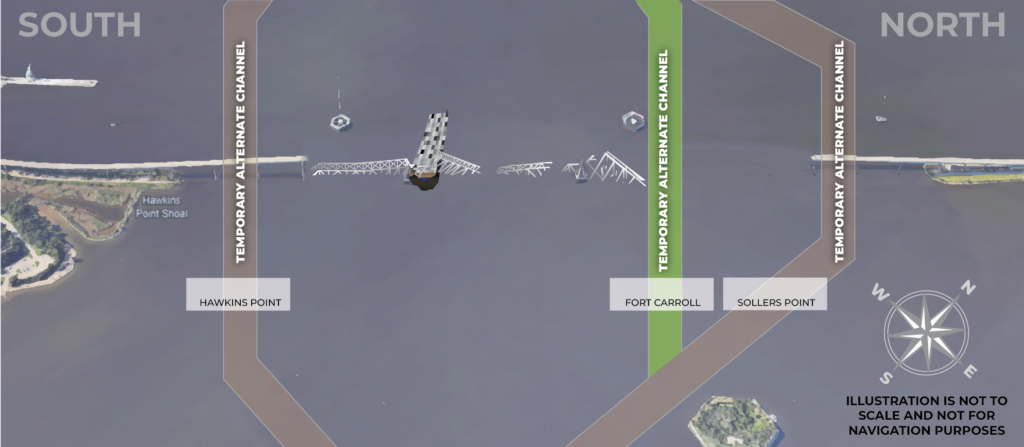(BALTIMORE) — The captain of the port (COTP) has established the Fort Carroll Temporary Alternate Channel, which is on the northeast side of the main channel in the vicinity of the Francis Scott Key Bridge and will provide limited access for commercially essential vessels. The bridge collapsed on March 26 after being hit by the containership Dali.
The Fort Carroll Temporary Alternate Channel has a controlling depth of 20 feet, a 300-foot horizontal clearance, and a vertical clearance of 135 feet, and will facilitate additional commercially essential vessel traffic through the Port of Baltimore.

This action is part of a phased approach to opening the main channel. The third temporary channel is marked with government-lighted aids to navigation and will be limited to transit at the discretion of the COTP.
“This additional channel increases the types of vessels able to transit inbound and outbound the Port of Baltimore,” said U.S. Coast Guard Capt. David O’Connell, captain of the port and federal on-scene coordinator, Key Bridge Response 2024. “We estimate facilitating approximately 15 percent of pre-collapse commercial activity.”
The current 2,000-yard safety zone around the Francis Scott Key Bridge remains in effect and is intended to protect personnel, vessels and the marine environment. No vessel or person will be permitted to enter the safety zone without obtaining permission from the COTP or a designated representative.
“Every day, members of the Key Bridge Response Unified Command are working tirelessly to complete the steps necessary to support full access to the Fort McHenry channel,” said O’Connell. “The opening of this third channel represents continuous progress towards this overarching objective.”
The Key Bridge Response 2024 Unified Command includes the U.S. Coast Guard, U.S. Army Corps of Engineers, Maryland Department of the Environment, Maryland Transportation Authority, Maryland State Police, and Witt O’Brien’s representing Synergy Marine.

